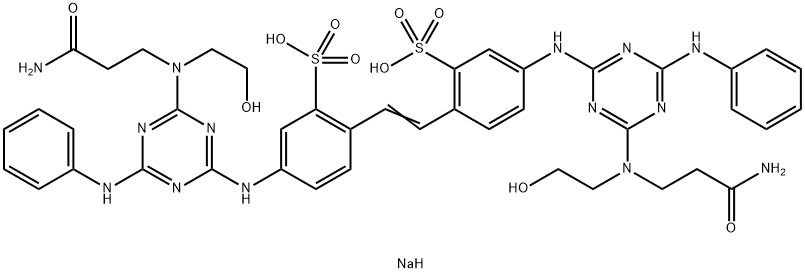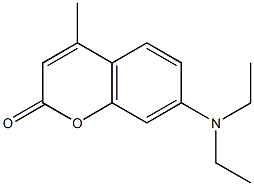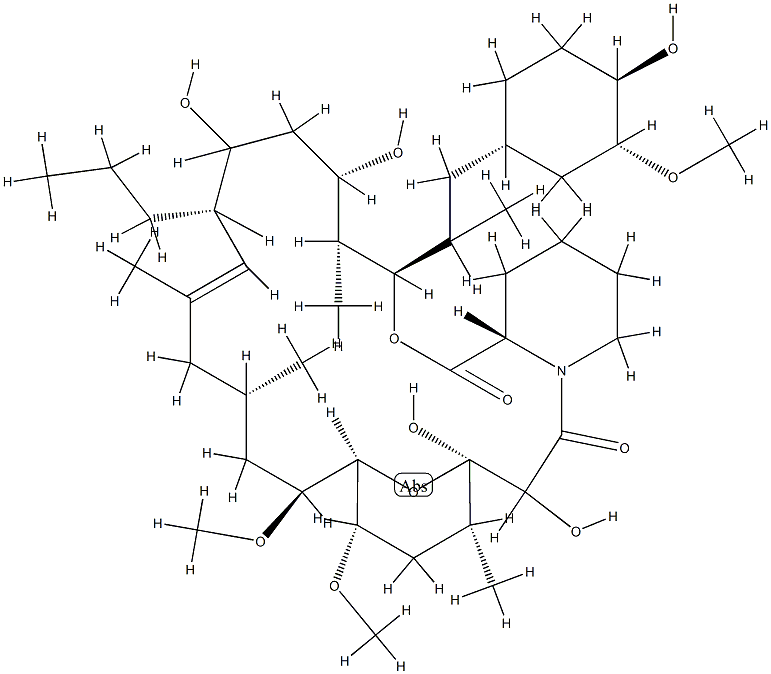Fluorescent brightener
1929 P. Krais found that aesculetin can emit fluoresces under ultraviolet light with the fabric, after being immersed in an aqueous solution, obtaining whitening effect. The first commercially available fluorescent brightener was the derivatives of the 4, 4'-bis-triazine stilbene-2, 2'-disulfonic acid developed by the Federal Republic of Germany Bayer company in 1940. Since then, people have further developed a number of fluorescent brightener agents, and thus becoming self-contained series dyes.
Fluorescent brightener is commonly known as "white dye", also known as optical brighteners, briefly called brighteners. It is a colorless organic compound that can stimulate fluorescence under ultraviolet light. Its brightening effect is through the principle of the optically complementary color, making yellowing substances, after subjecting to fluorescent brightener treatment, not only can reflect visible light, but also absorb UV light outside the visible light into visible light of blue/yellow or cyan to be reflected. It is organic matters that can improve the whiteness of the fabrics and paper. Brighteners can absorb the ultraviolet in 330 to 360 nm wavelength with the reflected light being at a blue/violet light of wavelength of 400 to 440 nm, coinciding with the yellow light reflected from the fabric undergoing bleaching but still exhibits yellow color as mutually complementary colors. Therefore, these two colors add with each other and become white so that the fabric becomes white. After the whitening process, due to that there is a portion of ultraviolet light becoming visible light to be reflected out with the total reflection amount increased compared to non-processing fabric, the brightness of the treated fabric also increases, becoming whiter. It can also increase the vividness of the colored fabrics. Fluorescent whitening, being different with chemical bleaching, would not destroy the fabric color and intensity. However, for fabric and paper of darker background, if they undergo direct brightening treatment without bleaching, can’t obtain good results.
The organic compound taken as fluorescent brightening agents should having at least four conjugated double bonds, such as -C = C-C = C -C = C-C = C- or -N = C-C = C- C = N -C = C- in its molecule structure. The common structure of chromophore contains four kinds:
① Stilbene type: such as brighteners VBL. It is mainly used for the brightening of cotton fibers and being taken as the brightening component in advanced synthetic detergent.
② Coumarin type, such as brighteners WS. It has a strong blue fluorescence, being the brighter of polyamide, wool and silk.
③ Azole type; It is mainly for the brightening of wool, polyamide and acrylon.
④ Naphthalimide type: such as APL. It can be applied to the brightening of the polyamide, polyester and PVC.
Brightener is mainly used in textile industry to improve the whiteness of a variety of natural and synthetic fabrics and enhance shine. In recent years, its application in the fields of paper, plastics, leather, soap, synthetic detergent and other daily necessities in is also growing rapidly.
- Chemical Name:Fluorescentbrighteningagent199
- CAS:58449-88-0
- MF:C24H16N2
- Chemical Name:Anticoagulation levelling agent
- CAS:
- MF:
- Chemical Name:fluorescent whitening agent DMS
- CAS:
- MF:C40H38Na2N12O8
- Chemical Name:Fluorescent brightener OBK
- CAS:
- MF:
- Chemical Name:Fluorescent brightener HER-1
- CAS:
- MF:
- Chemical Name:Fluorescent Brightener PS
- CAS:
- MF:
- Structure:

- Chemical Name:disodium 4,4'-bis[[4-anilino-6-[(2-carbamoylethyl)(2-hydroxyethyl)amino]-1,3,5,-triazin-2-yl]amino]stilbene-2,2'-disulphonate
- CAS:27344-06-5
- MF:C42H47N14NaO10S2
- Structure:

- Chemical Name:Fluorescent brightener 140
- CAS:61968-71-6
- MF:C14H17NO2
- Structure:

- Chemical Name:Fluorescent Brightener 368
- CAS:117313-08-3
- MF:C44H77NO12
- Chemical Name:Fluorescent Brightener 90-1
- CAS:120797-63-9
- MF:
- Chemical Name:Fluorescent Brightener 101
- CAS:51848-34-1
- MF:
- Chemical Name:Fluorescent Brightener 181
- CAS:12224-37-2
- MF: